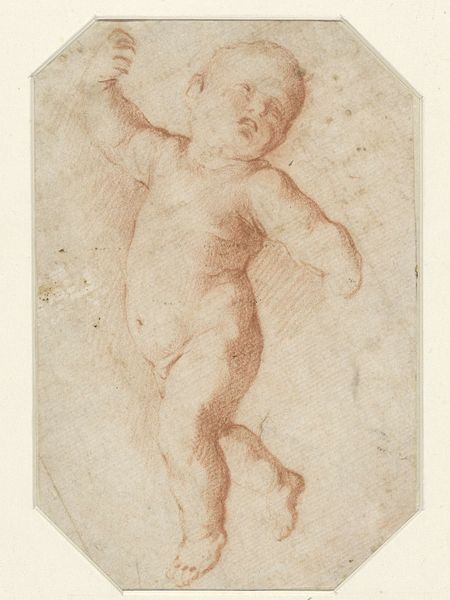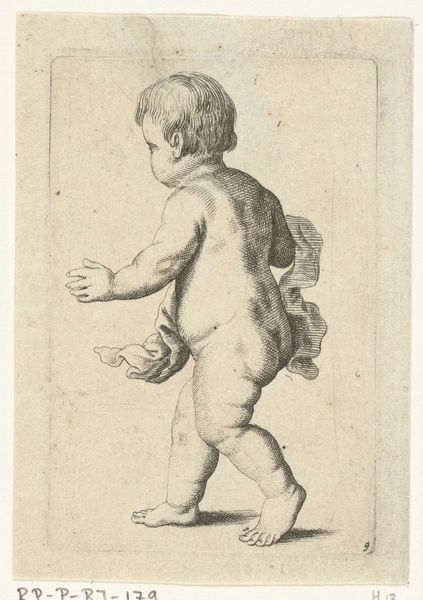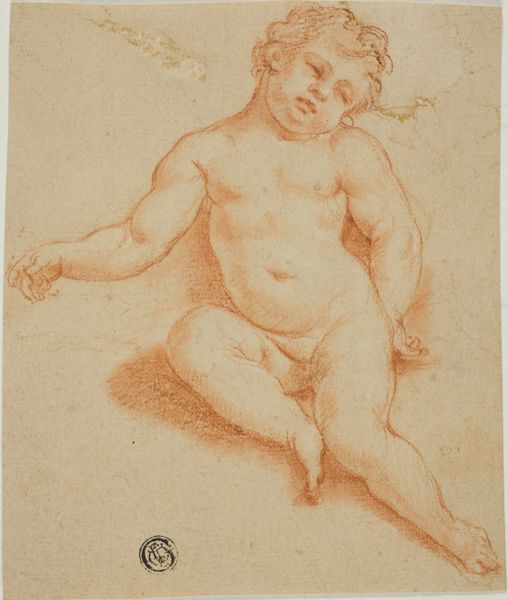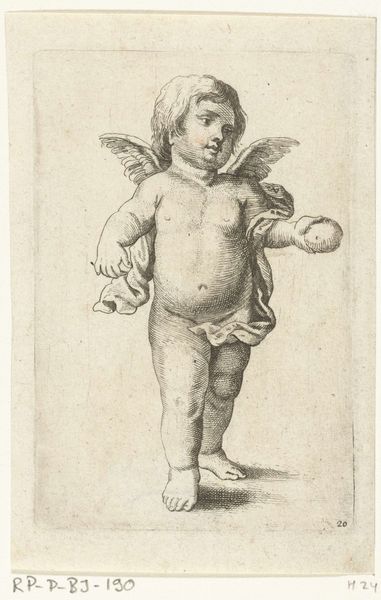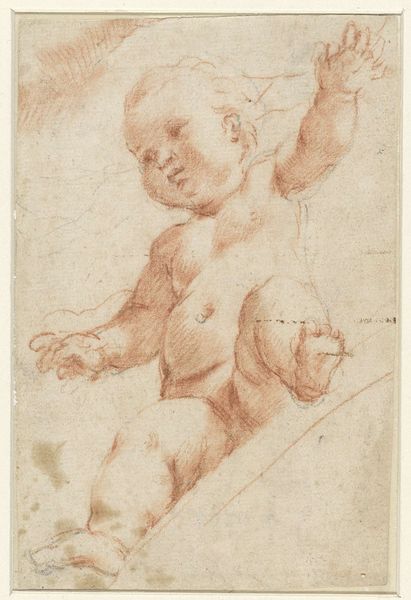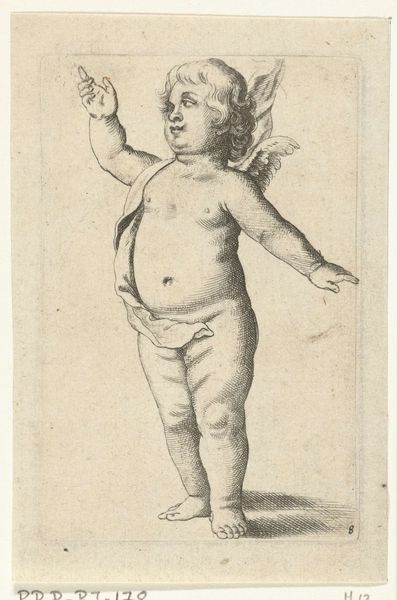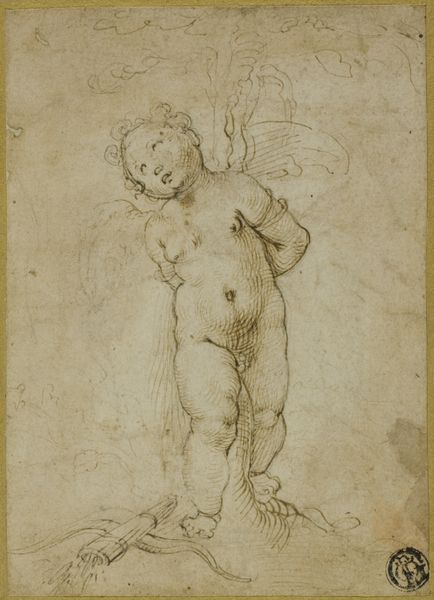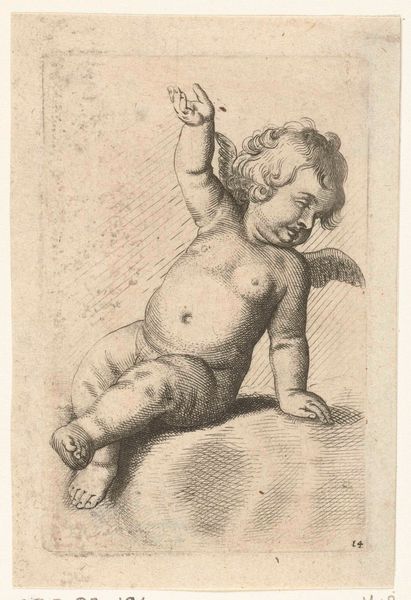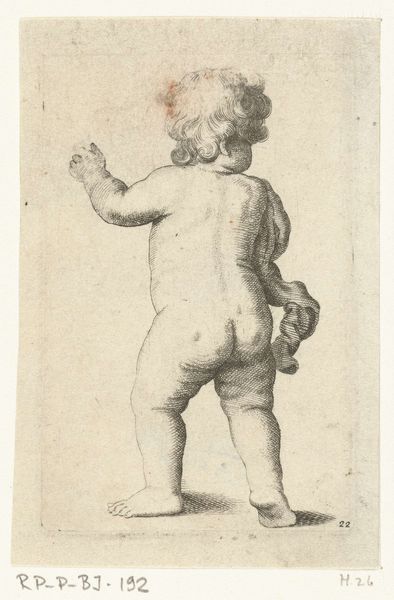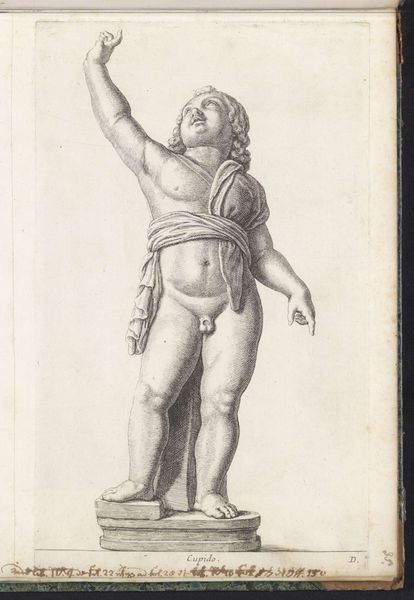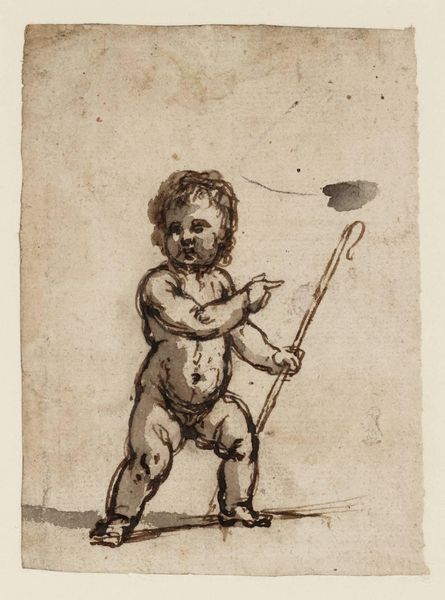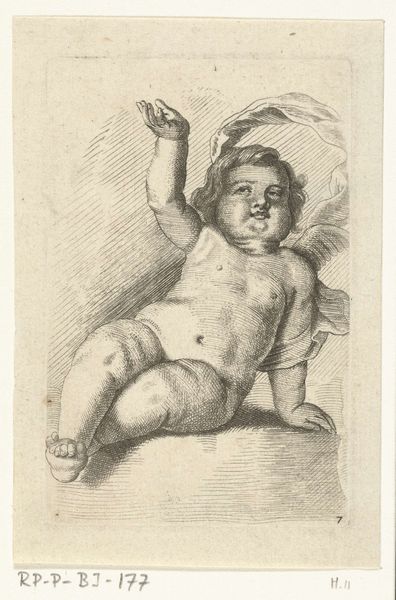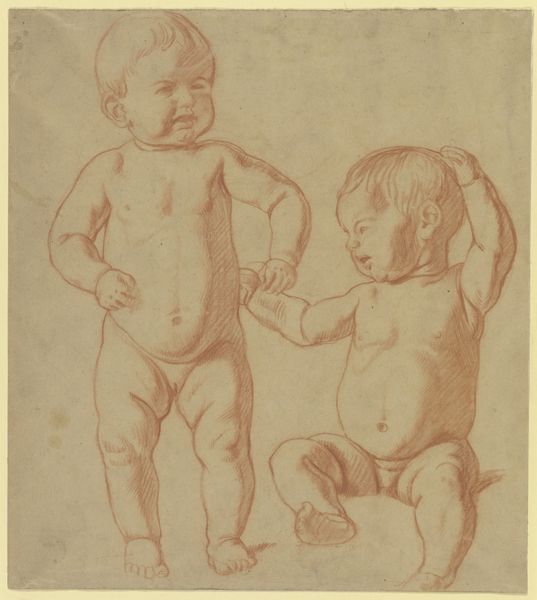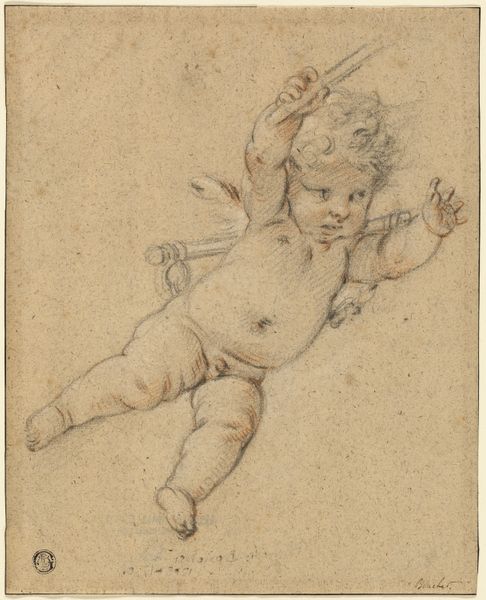
#
amateur sketch
#
light pencil work
#
pencil sketch
#
incomplete sketchy
#
possibly oil pastel
#
pencil drawing
#
underpainting
#
portrait drawing
#
watercolour illustration
#
watercolor
Dimensions: height 313 mm, width 177 mm
Copyright: Rijks Museum: Open Domain
Editor: This is Jacob de Wit's "Naakt jongetje", likely from sometime between 1705 and 1754. It appears to be a pencil drawing or watercolor illustration of a nude boy. It has a very tentative feel – what’s your read on this piece? Curator: Thank you. Considering the time period, it's crucial to examine the cultural context surrounding the male gaze and representation of childhood innocence, even if through a sketch. In 18th-century art academies, anatomical studies were a core component of the artistic training process, where it was common practice for art students to make nude sketches. How do you think the artist is negotiating or reinforcing power dynamics between the artist and his model? Editor: It’s interesting that you mention that. His pointing arm feels somewhat authoritative, and maybe even subtly erotic, even though it’s of a child. I hadn't thought of the social implications of something that appears at first glance to just be anatomical study. Curator: Exactly! Consider how academic artistic standards shape the understanding and control of the representation of bodies through a very restricted lens. How can we then decolonize this traditional artistic practice? How might it impact our views on beauty, desire, and gender roles? Editor: So, you're encouraging us to actively question this history rather than passively accept the seemingly classical beauty and anatomical purpose. Curator: Precisely. Viewing it only as a traditional artistic rendering might be a misstep. It invites us to acknowledge historical and ongoing questions of representation. Editor: I appreciate your insights. It’s completely shifted my perception. Thanks! Curator: Likewise. These dialogues allow us to reshape the landscape of art and foster a sense of accountability for the ways images circulate and operate within our world.
Comments
No comments
Be the first to comment and join the conversation on the ultimate creative platform.
